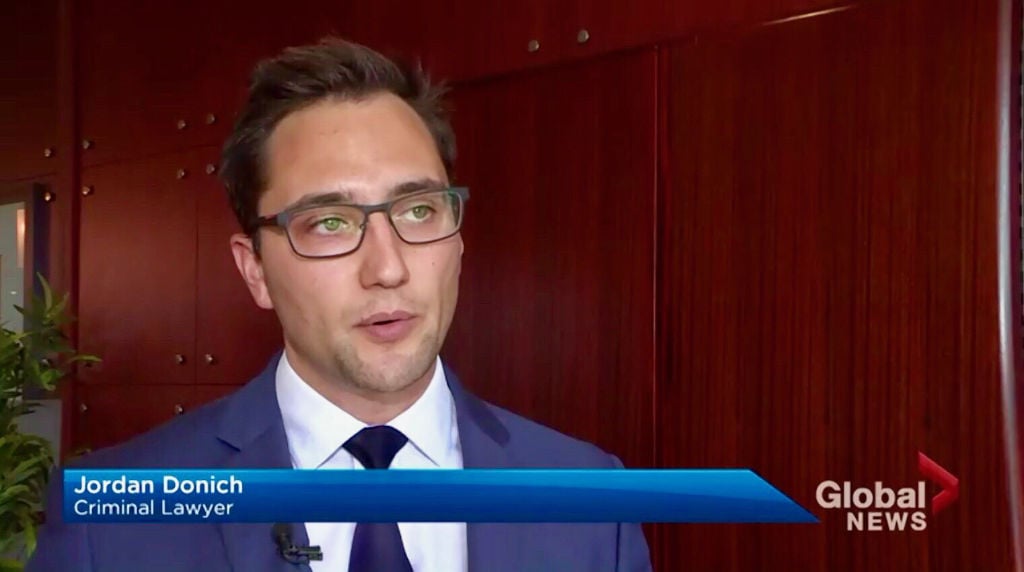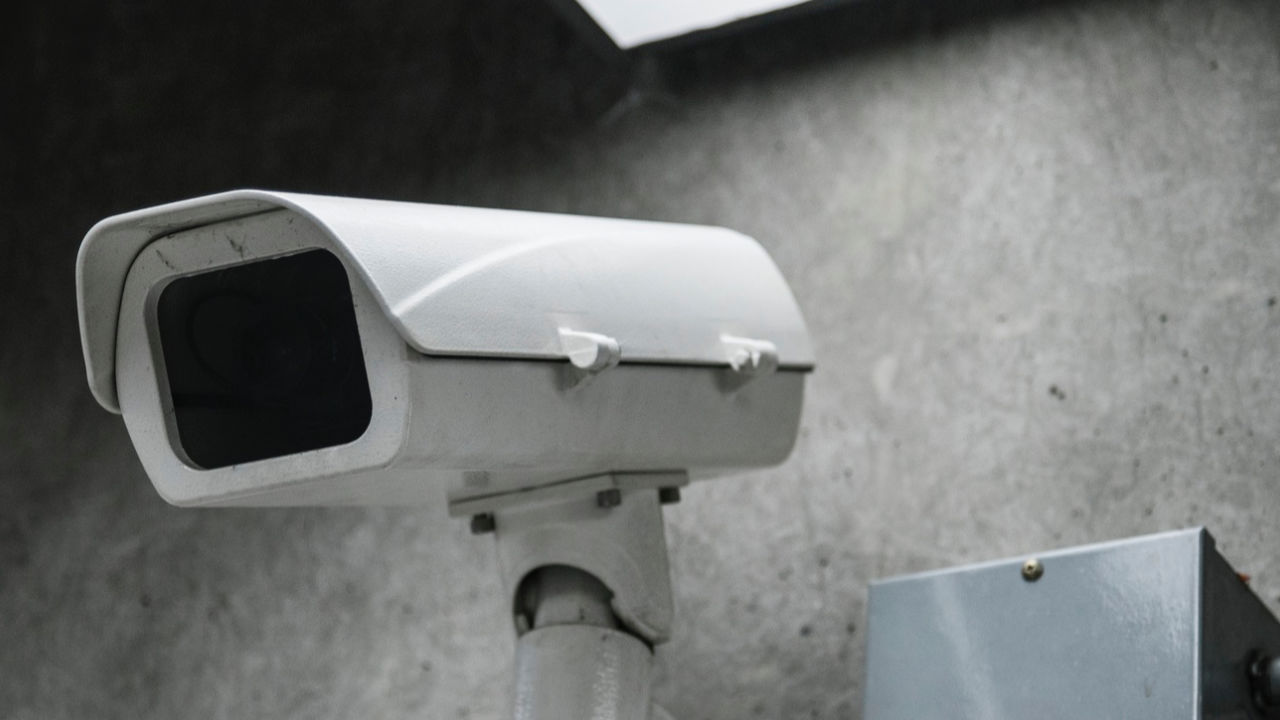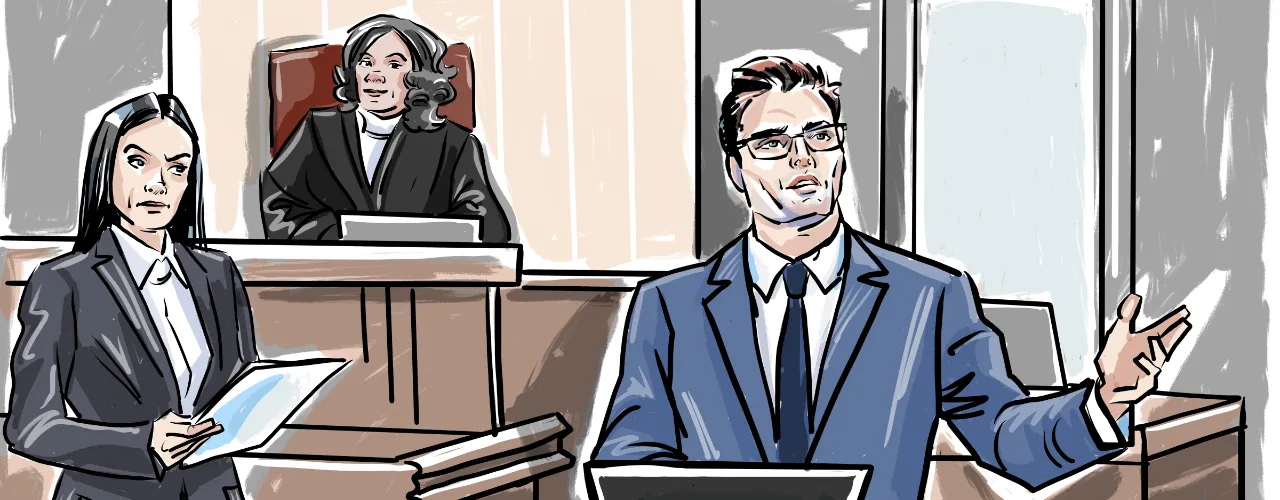
Defend Child Pornography Charges
Crime Statistics
Child pornography offences are serious sex crimes in Canada. Between 2014 and 2020, there were 10,379 cases of online sexual offences against children, and 29,028 incidents where the victim could not be identified. Child sexual offences committed online were more likely to be found guilty with up to 61% of cases resulting in a guilty conviction. There were 11,790 cases of child pornography cases discovered in 2021.
Our Experience
Donich Law has experience defending complex child pornography cases for over 10 years and has defended individuals charged in some of the largest international child pornography busts in Ontario history. Our lawyers have worked with the Internet Child Exploitation (ICE) units of various police forces across Ontario, giving us a special skill set when defending child pornography cases.
In 2022, Donich Law defended a young person charged with two child pornography offences in R. v. P.S. [2022]. While uncommon for a youth to be charged with such an offence, it is not impossible. Any young person who possesses any material that constitutes child pornography material pursuant to section 163.1(1) is guilty of an offence, as long as they are not the individual depicted in the material. The Firm litigated the matter in youth court for roughly two years and resolved the matter without a criminal record for the youth.
In R. v. T.T. [2022], the Firm successfully defended a client charged with one count of making child pornography, four count of possession of child pornography, three count of distributing child pornography and one count of child luring. The client was arrested when his online activity came to the attention of law enforcement after being flagged by a popular social media website. Police secured production orders and then a search warrant for the accused’s residence. Further evidence of the alleged offences was discovered in the accused’s residence. The Firm engaged in two years of Crown negotiations. After significant Crown delay, the Firm began preparing an 11(b) Charter challenge. Prior to launching the challenge, the Crown resolved, withdrawing seven of nine charges.
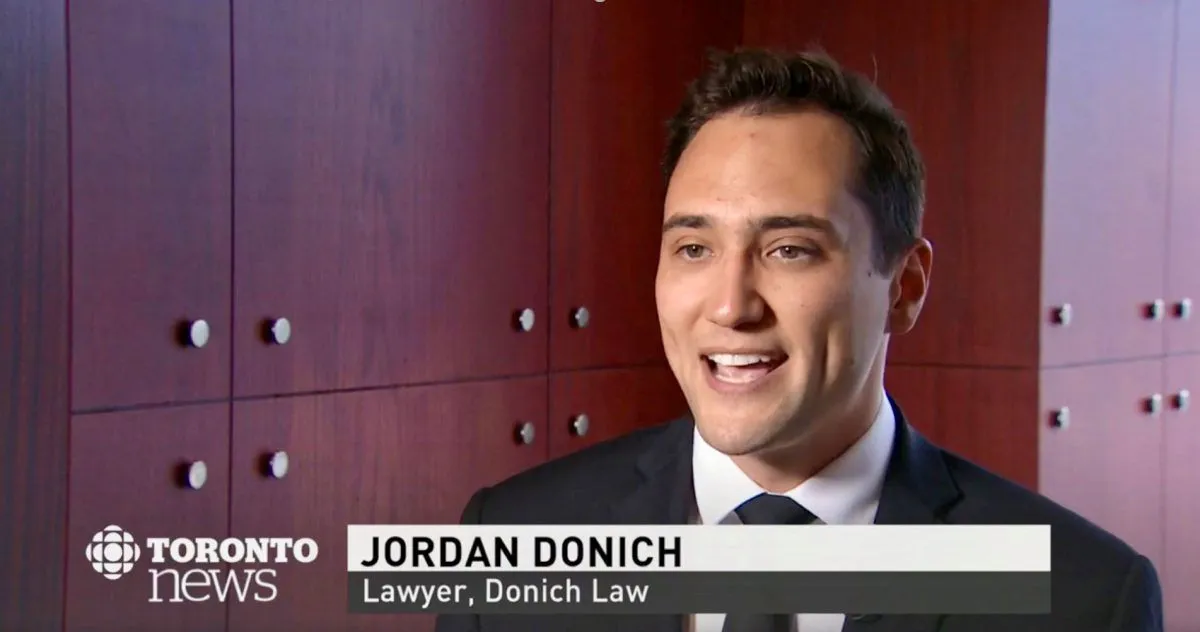
- Toronto Star: Pornhub and Revenge Porn.
- Toronto Star: New Corporate Liability for Child Pornography in Canada.
- Toronto Star: Police Power and Social Media Companies.
- Global News: Can an airline tell you to stop recording and delete a cellphone video?
- Métro Montréal: Avec le temps chaud, il n’y a pas que le mercure qui grimpe: le nombre de cas de voyeurisme aussi.
- CityNews: As the temperatures outside get warmer, police say the reported number of cases of voyeurism tend to rise.
- VICE News: An Image Site is Victimizing Women and Little Can be Done.


The Firm also has experience defending cases where the Children’s Aid Society (CAS) has become involved. Where an accused person has young children of their own, it is common for the Children’s Aid Society to be notified of the parents’ arrest. The Children’s Aid Society may then launch an investigation of their own to determine whether the children are safe in their home and in the presence of the accused. The Firm has represented individuals who have had access to their children restricted after being charged with child pornography offences.
In the 2019 case of R. v. A.E. [2019], Donich Law successfully challenged a CAS order prohibiting the client from having access to his own children after an arrest for child pornography offences. The Firm raised various concerns with CAS’s decision and provided proof that the accused was not a threat to his children. The CAS decision was overturned by the court, restoring the accused’s access to his children.
Internet Child Exploitation is a Global Problem
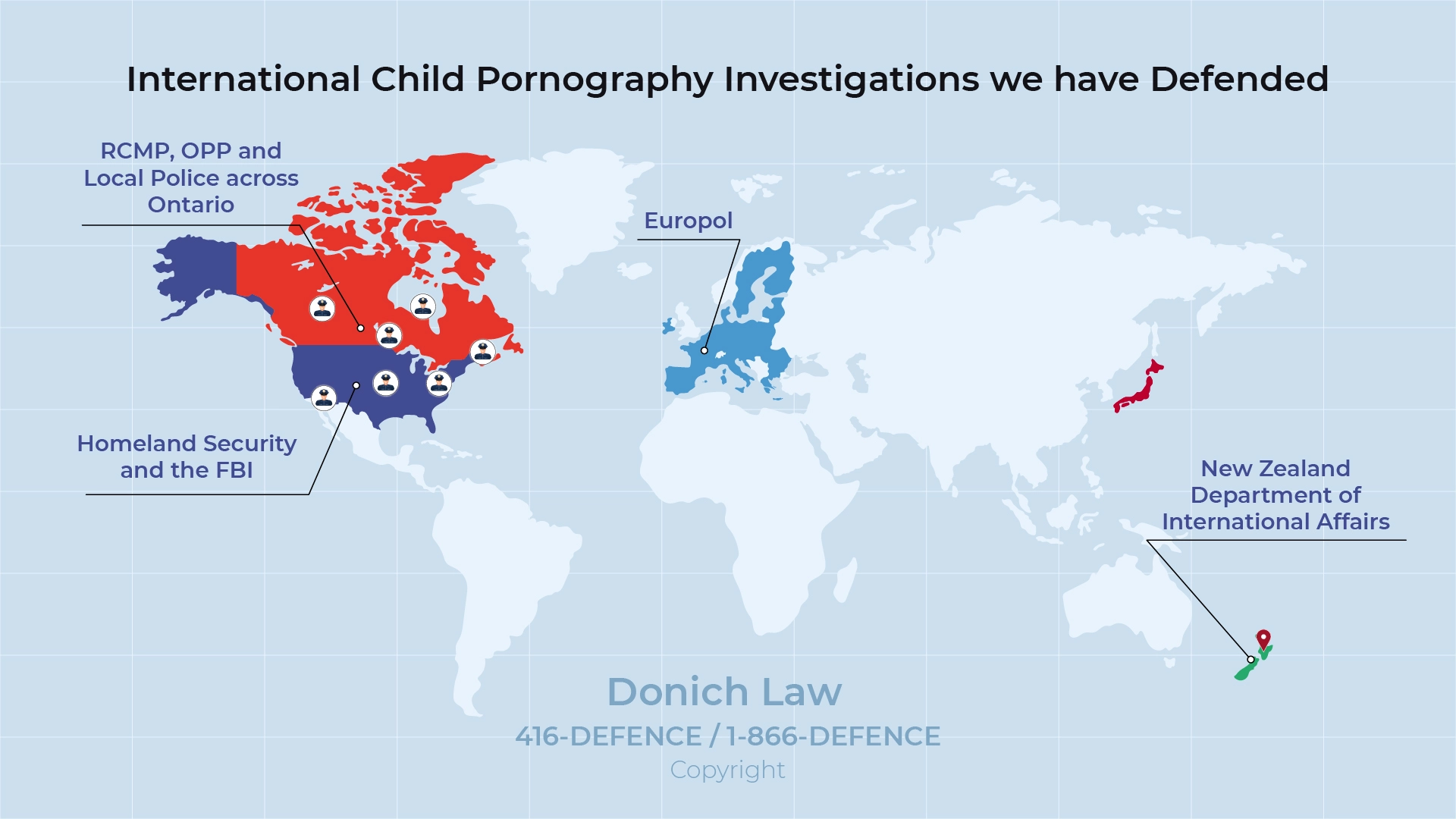
In 2018, the Windsor police reported 35 incidences of child pornography out of a total of 1,669 cases in Ontario and 5,843 cases in Canada. This means that child pornography offences in Windsor constituted 0.59% of all child pornography cases in Canada in 2018. In 2018, the rate of sexual assault and sexual violations against children were 84 per 100,000 people in Windsor. Sexual violations against children and child pornography are often crimes that require a special investigative unit. Windsor has a dedicated Internet Child Exploitation Unit that investigates cybercrime against children.
In 2020, the Firm represented an individual charged with distributing child pornography in R. v. M.C. [2020], after the accused allegedly distributed child pornography material to another Internet user in Europe. After months of Crown negotiations, the Firm was able to secure a withdrawal. The accused also challenged other charges in the prosecution after child pornography was found on his desktop.
Online Sex Offence are on the Rise in Canada
In 2021, the Firm represented an individual charged with 2 counts of child pornography in R. v. M.O. [2021]. The Firm successfully defended the charge by carefully analysing the Form 1 Search Warrant and Form 5.004 Production Warrant used to seize the accused’s electronic devices. The Firm ordered a forensic analysis of the material, challenging whether or not it met the definition of child pornography. After almost 2 years of negotiations with the Crown, the charges were withdrawn.
In R. v. J.M. [2021], the Firm successfully defended an individual charged with 1 count of child pornography after allegedly downloading material that constituted child pornography from an online file sharing site. The Internet Child Exploitation (ICE) unit of the local police department were alerted to the activity and executed a search warrant on the residence of the accused. Several of the client’s electronic devices were seized. The Firm ran forensic analysis on the metadata collected from the accused’s devices and used it to argue accidental download. As a result, the Crown agreed to withdrawal the charge.
Law Newbie is a free AI research assistant that can help you safely answer questions about criminal law.




Frequently Asked Questions
How Can a Person Be Charged with Making Child Pornography If They Never Touched a Child?
Child pornography can be made without the involvement of children. One definition of child pornography within the law is any material, written, visual or audio that advocates or counsels sexual activity with a minor. In addition, the Code defines any written material that has the primary characteristic of depicting sexual activity with a minor for a sexual purpose to be child pornography. As long as the subject matter centered around the exploitation of a child, it constitutes as child pornography. Furthermore, the Code qualifies any photographic, film, video, or visual representation, whether it was made by electronic or mechanical means as child pornography. This means that computer generated images and drawings depicting children in a sexual manner constitute as child pornography as well.
Can Photoshopping Images Be Considered Making Child Pornography in Windsor?
Photoshopping images can be considered making child pornography. Child pornography is defined by the law is any material that shows, advocates, or depicts sexual activity with a minor. Photoshopping images onto existing child pornography may not be physically harming a child, but it is still against the law and a violation of the child’s basic rights and dignity. The misconception that child pornography is a victimless crime is a prevalent one among those convicted of child pornography. Many do not realize the repeated victimization that comes with the creation of child pornography—each time the material is shared and viewed, the child is victimized again.
In the case of R. v. Rhode, [2019] SKCA 17, the defendant had pictures that did not necessarily depict genitalia of minors, but photoshopped himself covering the pelvic region of one and masturbating to another in a blue dress. The offender also added himself to several videos of victimized children. The trial judge found that these photos constituted as child pornography, as it was designed for a sexual purpose. The defendant was charged with making and possessing child pornography.
What Are the Bail Conditions Associated with Child Pornography?
Generally, the bail conditions associated with child pornography are very strict. A prohibition order may be put in place, prohibiting the accused from accessing the internet or other spaces, or restricting access to children.
If the defendant does not have counsel at the bail hearing, the likelihood increases that the Crown will place more onerous conditions on the accused. The accused might be too afraid to speak or may be too unfamiliar with the court process to properly advocate for their rights.
For example, a complete internet ban might become a problem for a web developer who supports his family through his work. Counsel may argue that it is necessary to include an exception to allow supervised or limited internet access. Exceptions to bail conditi0ons do exist, but bail conditions can usually only be varied and not removed completely. This meant that while defence counsel may not be able to completely remove bail conditions, they may be able to alter them to allow the accused more freedom if necessary.
What Are the Sentencing Principles in Child Pornography Cases in Windsor?
The primary sentencing principles in child pornography cases are enumerated in R. v. Friesen, [2020] SCC 9. In the Supreme Court of Canada case, the accused pled guilty to sexual interference and attempted extortion. The defendant met the child’s mother on an online dating website, and after having consensual intercourse with her, had the mother bring the child into the room. He then sexually assaulted the victim. The mother’s friend, who resided in the residence, heard distress and removed the child. The defendant threatened to accuse the mother of abusing her other child unless the victim was brought back into the room. After a confrontation with the mother’s friend, the accused fled.
In their decision, the Supreme Court of Canada also took the time to consider the primary sentencing principles for child-related sexual offences such as child pornography. The Court called for stricter and tougher punishment for child-related sexual offences. Due to the severe nature of the offence, the Court decided that the primary sentencing principles should be deterrence and denunciation. Both the Court and Parliament wished to deter offenders from ever committing the crime, and so decided on tougher sentencing by increasing the maximum penalties prescribed in the Code.
The rest of the sentencing principles which the Court must consider are set out in section 718 of the Criminal Code. They are to denounce the crime, to deter further crime, to separate offenders from society, to rehabilitate offenders, provide reparation for victims, and promote responsibility in the offender. These principles do come into play when courts sentence child pornography offences. If an offender displays heartfelt remorse and actively engages in counselling for their condition, it would be considered a mitigating factor for the sentence.
Will Travel Be an Issue with This Conviction?
All countries reserve the right to deny entry to any foreign national. Child pornography charges are particularly serious, due to the possibility of child sex tourism. Travelling with a criminal record outside of Canada may be difficult. Section 212(a)(2) of the Immigration and Nationality Act declares a person with a criminal record cannot apply for a visa to travel to the United States. In certain circumstances, the Attorney General may waive the inadmissibility and allow someone with a record to apply for a visa under certain circumstances using s. 212(h).
This inadmissibility may depend on the particular offence. For example, crimes of “moral turpitude” or any offence related to a controlled substance are inadmissible. The United States government provides guidance on what is determined as moral turpitude. Moral turpitude are crimes such as but not limited to: fraud, assault, arson, robbery, extortion, bribery, perjury, sexual assault, kidnapping, manslaughter, and murder.
Recent Cases
R. v. A.M., 2023 ONCJ 181
The accused entered a guilty plea for possessing and accessing child pornography in the Ontario Court of Justice case of R. v. A.M. A detective discovered the offender accessing child pornography using a child protection program. During the search, the police discovered 18 unique images and five videos. During the arrest, the defendant advised he had the file-sharing program to access child pornography, and stated, “curiosity killed the cat.” The defendant regularly deleted content he downloaded.
After hearing his guilty plea, the judge ordered a pre-sentence report as well as a sexual behaviours assessment. The defendant was a member of the Canadian Forces and had a difficult childhood. Though he was living with his wife and child at the time of the arrest, he had since taken up residence with his new partner, who was supporting him through the proceedings. Medical assessment of his sexual behaviours determined that there was no strong evidence of sexual interest in children. However, the Court noted that there was little to no difference between this case and other child pornography cases that would impose a lesser sentence. The offender was sentenced to nine months incarceration.
R. v. Crump, 2023 ONCJ 132
In the Ontario Court of Justice case of R. v. Crump, the defendant was found guilty of accessing, possessing, and making available child pornography. The defendant was found in possession of child pornography on his bedroom computer. The police failed to inform him of his rights during detainment, and so the defendant made incriminating statements during the search. These statements were excluded due to his section 10(b) rights being violated. However, the search was found to be constitutional as the Court did not find the search and seizure of child pornography to be in violation of the defendant’s Charter rights. The police reported 204 images of child pornography were on the device.
The Court had already established in R. v. Friesen that the mandatory minimum for possession and accessing child pornography is six months incarceration. The court considered several aggravating and mitigating factors. The defendant was a young first offender that had a promise of rehabilitation as well as a low risk of recidivism. The defendant was sentenced to six months, with ancillary orders of a DNA order and a SOIRA order. In addition, the defendant was subject to a s. 161 order, restricting his access to children and preventing him from being employed or volunteering where there are children.
R. v. Hughes, 2023 ONSC 1589
The defendant pleaded not guilty to two counts of possession of child pornography and one count of distributing child pornography. In the Ontario Superior Court of Justice case of R. v. Hughes, the accused’s devices were found with over a thousand unique images of child pornography, along with 22 unique videos.
The accused launched a Charter challenge, alleging that the police had no reason to search and seize his devices. However, the trial judge ruled that due to the police’s investigative techniques and the method in which the defendant was sharing child pornography, the Charter application did not apply. The undisputed facts were that the defendant intended to make child pornography available to others and did so. The accused demonstrated knowledge of how to use the filesharing and distributing child pornography. The accused was found guilty on all counts.








